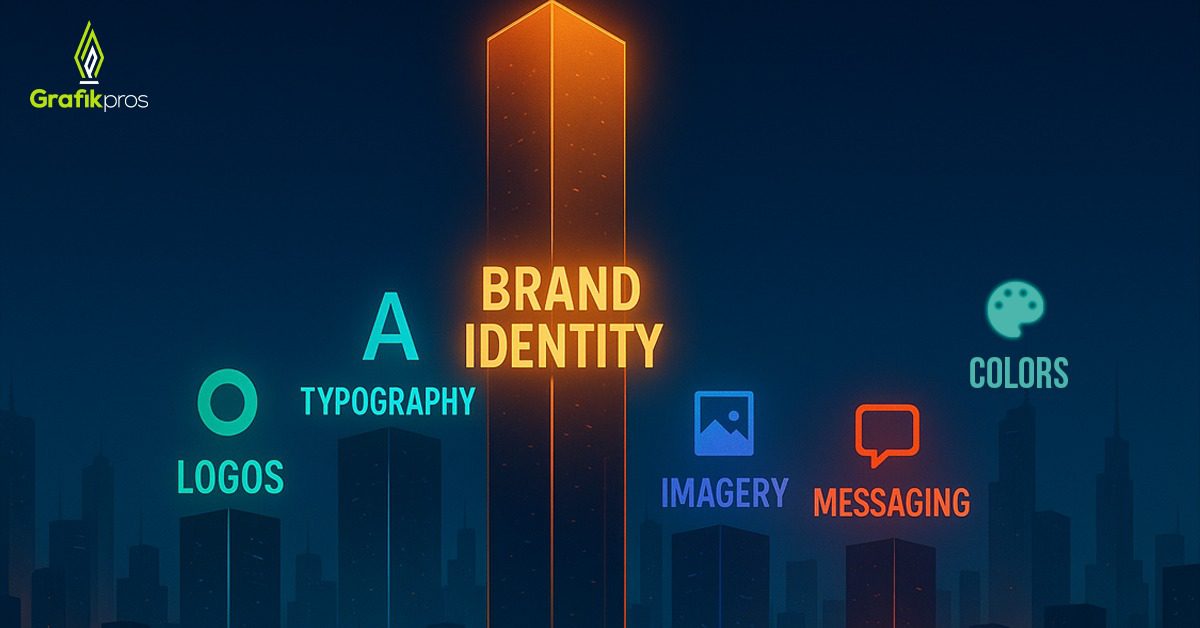Brand Identity Design: How to Build a Brand That Lasts
In today’s competitive world, businesses are remembered not only for what they sell but also for how they present themselves. From logos and colors to the tone of voice used in communication, every detail shapes how people perceive your brand. This complete system is known as brand identity design, and it’s one of the most powerful tools for building recognition, trust, and loyalty.
A strong brand identity design doesn’t happen by accident. It’s carefully created to reflect your purpose, values, and personality in a way that connects with your audience. Let’s explore what brand identity is, how to design it, the key elements of brand identity design, and the five pillars of a strong brand identity.
What Is Brand Identity in Design?
Brand identity in design is the visual and strategic representation of your brand. It’s the combination of logos, typography, color palettes, imagery, and messaging that together create a distinct personality for your business.
Think of it as the first impression of brand identity design. Just like meeting a new person, people form opinions about a brand within seconds. A polished and consistent identity makes your brand memorable, professional, and trustworthy.
How to Design a Strong Brand Identity
Designing a powerful identity goes beyond choosing a logo or a few colors. It requires research, creativity, and strategy. Here’s how to design a brand identity that attracts customers and builds loyalty:
- Research your audience and competitors– Understand your target market and what sets you apart.
- Define your brand personality– Decide how you want people to feel when they interact with your brand (friendly, professional, bold, innovative, etc.).
- Create your visual system– Develop a logo, select brand colors, and choose typography that reflects your values.
- Develop brand guidelines– Establish rules for how your visuals and voice should be used across all platforms.
- Apply consistently– Ensure your brand identity design strategy shows up the same way on your website, social media, ads, and packaging.
This process helps transform a simple business into a recognizable and trusted brand.
The Key Elements of Brand Identity Design
A strong identity is built from several essential components. The key elements of brand identity design include:
- Logo design for brand identity– A simple, versatile, and memorable symbol that represents your business everywhere.
- Color palette for emotional branding– Colors that influence emotions and create strong associations with your business.
- Typography in brand identity design– Fonts that reflect your personality and ensure consistency across all materials.
- Imagery and graphics for brand storytelling– Photos, icons, and illustrations that communicate your brand’s mood and values.
- Brand voice and tone consistency– The communication style that makes your brand sound authentic and reliable.
- Design layouts and shapes– Frameworks that give structure and reinforce brand character.
- Consistency across all brand platforms– The glue that ties everything together for a unified customer experience.
When aligned properly, these elements of brand identity design build recognition, trust, and emotional connection with your audience.
The Five Pillars of Brand Identity
Beyond the visual elements, every successful identity is supported by the five pillars of brand identity design:
- Purpose in brand identity– The deeper reason your business exists beyond profit.
- Brand positioning for competitive advantage– Your unique space in the market that makes you stand out.
- Brand personality traits– Human-like qualities (playful, bold, reliable) that make your brand relatable.
- Brand promise to customers– The value and reliability you consistently deliver.
- Consistency in brand identity design– Ensuring every customer experience feels familiar and aligned with your brand.
Together, these pillars transform design into a long-term strategy that builds loyalty and recognition.
Why Brand Identity Design Matters
Professional brand identity design is not about decoration, it’s about communication. A logo, color scheme, or font on its own may look nice, but when combined strategically with purpose and consistency, they create a brand people recognize and trust.
A well-executed identity helps businesses:
- Stand out with unique brand identity designin competitive markets
- Build emotional connections with customers through branding
- Develop a consistent brand identity across digital platforms
- Strengthen customer loyalty with a strong visual brand identity
By focusing on the elements and pillars of brand identity design, you create a system that captures attention and nurtures long-term relationships.
Final Thoughts
Investing in brand identity design is one of the smartest moves a business can make. It’s the foundation of how people see, feel, and remember your brand. With clear purpose, strong elements, and consistent application, your identity becomes more than just visuals, it becomes a story that customers want to be part of.

